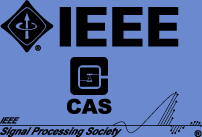Deep Learning Revolution: Integrating Neural Networks into Signal Processing Paradigms
Introduction
In the ever-evolving landscape of technology, the marriage of deep learning and signal processing stands as a revolutionary leap forward. As modern professionals, researchers, engineers, nursing paper writers, and enthusiasts, we find ourselves at the crossroads of two powerful domains – deep learning's prowess in pattern recognition and signal processing's finesse in data manipulation. This article unveils the remarkable synergy as we explore the integration of neural networks into traditional signal processing techniques, envisioning the possibilities that lie ahead.
Section 1: Deep Learning and Signal Processing: A Convergence
In the heart of our exploration lies a convergence of deep learning and signal processing – a union with the potential to reshape industries, fuel innovation, and solve intricate challenges. Deep learning, with its neural network architectures, equips machines to emulate human-like learning, while signal processing refines raw data into meaningful insights. This fusion, driven by the quest for more accurate, adaptable, and efficient solutions, propels us toward a new era of computational ingenuity.
Section 2: The Building Blocks of Neural Networks
Picture neural networks as the intricate threads of a digital fabric, woven to decipher complex patterns. Layers of interconnected nodes, or neurons, process data through activation functions, adapting and learning from each iteration. The symphony of these elements brings forth the adaptability and predictive capabilities that define neural networks, granting them the power to untangle intricate information webs.
Section 3: Signal Processing Paradigms: Where Tradition Meets Innovation
Tradition meets innovation as we traverse through the annals of signal processing. From time-honored techniques to novel methodologies, the field encompasses a spectrum of tools, each with its strengths and limitations. Enter neural networks – the game-changers. They inject innovation into established paradigms, breathing life into scenarios where traditional methods falter, elevating signal processing to newfound heights.
Section 4: Applications at the Intersection
The intersection of neural networks and signal processing yields a symphony of applications that resonate across industries. In speech and audio processing, neural networks fine-tune recognition accuracy, enabling emotion detection in human voices. When it comes to images and videos, neural networks usher in a new era of clarity through object detection and restoration. In the realm of healthcare, nursing papers illuminate the role of neural networks, from patient monitoring to personalized treatment strategies, revolutionizing care delivery.
Consider these examples as stars in a constellation, each representing a profound step towards merging neural networks and signal processing.
Section 5: Challenges and Opportunities
However, the path to innovation is not without its hurdles. Data prerequisites and preprocessing complexities cast shadows, while the quest for model interpretability sparks a relentless pursuit of transparency. Meanwhile, the orchestra of computational complexity and resource constraints plays on. Yet, within these challenges, opportunities unfold. The research corridors buzz with potential solutions, each promising to usher in a new dawn of synergy and comprehension.
Section 6: Future Directions and Innovations
As the sun sets on the challenges, it rises on a future laden with promise. Explainable AI takes center stage, ensuring the decisions of neural networks are understandable, amplifying trust and accountability. The concept of edge computing gains momentum, empowering real-time processing in environments with scarce resources. The fusion of deep learning and traditional methods ushers in an era of hybrid models, where the best of both worlds converge for optimal outcomes. Innovation, it seems, is boundless.
Section 7: Embracing the Deep Learning Revolution: SiPS Conference
Picture yourself at the forefront of this revolution, where ideas spark, collaborations flourish, and knowledge thrives. The SiPS (Signal Processing Systems) conference extends an invitation – a platform where curiosity meets expertise. Engage in illuminating sessions, workshops, and dialogues, all centered around the harmonious blend of neural networks and signal processing. Professionals, researchers, engineers, nursing practitioners, and enthusiasts – all are welcome to partake in shaping this exciting journey.
Conclusion
In the grand tapestry of technology, the threads of deep learning and signal processing intertwine, crafting a narrative of innovation and transformation. As we bid adieu, remember the immense potential that emerges when neural networks dance in tandem with signal processing. Together, they orchestrate a symphony of progress, redefining what's possible. So, whether you're decoding patient insights or amplifying audio clarity, know that the revolution has begun – a revolution where deep learning and signal processing unite for a future beyond imagination.





